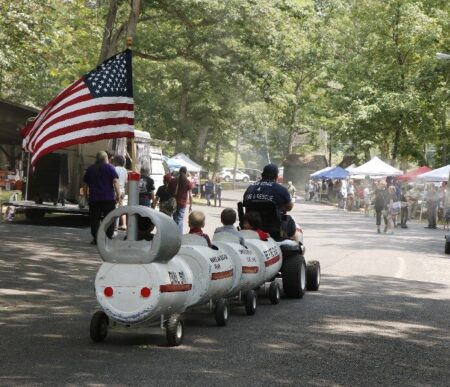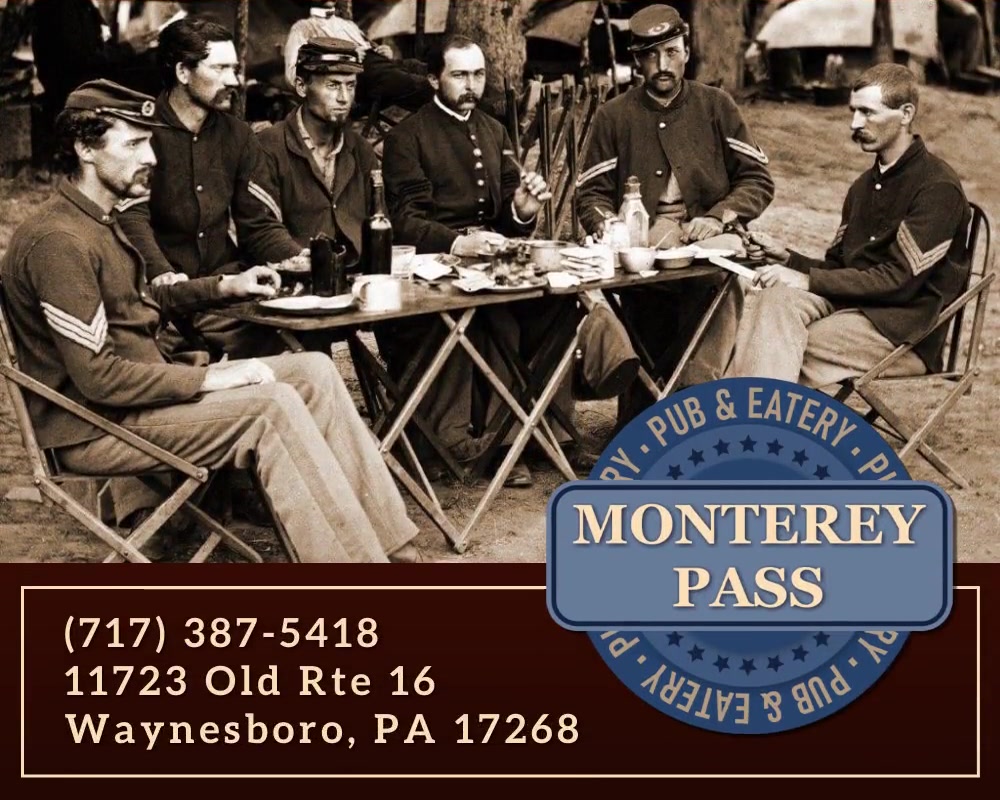President John F. Kennedy issued a daunting challenge in 1963. Originally directed toward the American military, he asked his servicemen to prove their physical fitness by traveling 50 miles on foot. Kennedy’s concept traced back 55 years earlier to another U.S. President: Theodore Roosevelt.
Roosevelt grew up a sickly child, but physical exertion helped him become a robust adult. Roosevelt issued a 1908 Presidential Executive Order, asking his Marine officers to hike 50 miles in 20 hours, spread over three days. Kennedy discovered this ancient decree. Adding a new challenge level, JFK shortened Roosevelt’s time-frame to a single day.
Kennedy enjoyed athletics despite numerous ailments that plagued his health. As President-Elect, he wrote a Sports Illustrated article titled “The Soft American” in which he worried about the country’s declining physical vigor.
While Kennedy thought the military’s 50-mile fitness example would inspire citizens, he never asked the public to undertake a long-distance hike. But then, President Kennedy’s ’63 fitness challenge was accepted by a person close to him: his brother, Robert F. Kennedy. “Bobby” was JFK’s Attorney General, and wanted to lead by example.

On February 9, 1963, Bobby put on Oxford dress shoes and started walking west from Great Falls on the C&O Canal towpath. Accompanied by four staffers, (none who finished) and shadowed by his 100-pound Newfoundland dog, RFK accomplished his 50-mile goal- despite snow and slush- after 17 hours and 50 minutes of walking.
RFK was sore and blistered from the wintery ordeal, but still took his children ice skating the next day. America was inspired and a new fad called the “Kennedy March” was launched.
Soon, 50-mile walks were organized all over the country. Thousands of ordinary citizens departed on long-distance hikes. On March 30, 1963, eleven members of the Cumberland Valley Athletic Club set out on a 50-mile course in Washington County, Maryland. That group was led by William “Buzz” Sawyer.
Sawyer was an accomplished 36-year-old runner, once an Olympic hopeful. He earlier represented the United States in a series of international track meets. Sawyer ran seven races in Greece, India, and Turkey- and won them all.
Armed with an engineering degree and love of maps, Sawyer laid out a demanding course in ‘63. It is almost the identical JFK 50-mile route still run today. While Sawyer was a North Carolina native, he seemingly had innate knowledge of Maryland’s countryside. His course touched on many Washington County historic sites.
The route began in Boonsboro, (founded by Daniel Boone’s cousin) and immediately climbed 1000 feet to South Mountain’s summit. There, close to an 1862 Civil War battlefield, Sawyer’s route grew more challenging as it entered the Appalachian Trail (AT). This famous footpath is America’s longest hiking trail (2190 miles) and runs for 40 rugged miles through Maryland. Sawyer’s group would cover 13 miles of it. This AT section traversed a rocky minefield that required intense concentration to avoid a bone-breaking fall.
Then, later at Weverton Cliffs, the course descended steeply on switchbacks as the AT dropped 1000 feet in elevation, reaching the Potomac River. For the next segment, a full marathon on the C&O Canal towpath was required- mimicking RFK’s earlier route- but on a further west section. The remaining canal and towpath are now a National Historic Park.

The final eight miles of Sawyer’s 50-mile course were trekked on hilly local roads that led to a finish at Hagerstown’s St. James School. Four men finished this original course in 1963. Sawyer was one of them, along with three 16-year-old high school students. Despite a four-way tie for first place (finishing time: 13 hours, 10 minutes), none considered it a race. The quartet only wanted to answer a single question: “can we do it?’
The runners learned important lessons that first year. Fifty miles tested the limits of physical endurance. Fifty miles also tried the tenacity of a human mind.
Eight months later, John F. Kennedy was assassinated on November 22, 1963. Sawyer and his friends decided to repeat their exploits in the spring of 1964, and renamed their second-held event the John F. Kennedy 50 Mile Hike, honoring the slain 35th President.

After Kennedy’s death, other 50-mile events around the country soon faded away. The public’s motivation for hiking 50 miles was replaced by Civil Rights marches and other pursuits. The JFK event was the only race that survived. During the 70’s running boom, a record 1724 JFK participants started in 1973; a mark for ultra-marathons that still stands. In later years, the event would set records for most finishers too. The JFK race was later changed to a November annual date.
As the race garnered national attention, its budding reputation was built on Buzz Sawyer’s solid shoulders. Sawyer was a meticulous record-keeper and so every individual performance in race history was dutifully recorded. He also believed in a strict amateur code. No prize money was paid during his tenure, but a handsome plaque embellished with a JFK medal (awarded to finishers) was a treasured keepsake. Sawyer managed the race on a shoestring, and often paid expenses from his own pocket.
The JFK 50-mile entered the 1990’s still running smoothly in Sawyer’s capable hands. But after thirty years, it was time to pass the leadership baton. But who could live up to the founder’s love and passion for the event? Lucky for the JFK race and Sawyer, he had met the perfect person twenty years earlier. His name: Mike Spinnler.
In 1971, Spinnler’s two older brothers told him they were running the JFK 50 Mile race. One bragged he would win it. Mike Spinnler was a born competitor. The youngest of seven children, he asked his father to let him enter the footrace with his siblings. Thinking Mike would drop out early, he agreed. Mike Spinnler was 12 years old.
Mike Spinnler finished the race in 14 hours and 19 minutes, six hours behind the winner. One of his brothers wound up in a hospital instead of the finishing line. The other brother barely beat Mike’s time. Seeing his Dad’s pride in his accomplishment (he was the youngest ever to complete the JFK), Mike told him that evening: “Someday I’m going to win that race.”
Spinnler ran in ’72 and ’73 and finished in 14:04 and 14:09; consistent times, but hardly progress to indicate a future champion. But then, in 1975, Spinnler finished in 7:46, nearly cutting his time in half.
After college, Mike Spinnler found a coaching mentor and by 1982 he felt a new level of confidence. He told his Dad on that JFK race morning: “Be at the finish line today.” Spinnler not only won the race, but set a new course record. He would follow up his win with another JFK victory in 1983.
At the ’83 winner’s ceremony, Spinnler professed his undying admiration for the JFK event and told Buzz Sawyer he’d gladly take the reins when Buzz retired. Sawyer smiled and said: “You’ve got it young man.”
Ten years later, Spinnler had retired from competitive running, and his leadership wish came true. Buzz Sawyer handed the keys to his prized event over to Mike Spinnler in 1993. Spinnler says Sawyer’s trust in him is the greatest honor he’s ever received. A new era began for the JFK 50 Mile race.
Spinnler recruited paid sponsors and started awarding prize money. He improved course management on race day by increasing volunteers and aid stations. Spinnler attracted more international and women runners. Scholarships were awarded. A few years ago, GPS tracking was provided to each participant, an added safety and timing feature. In a typical year, an impressive 90% of runners finish this grueling race.

The JFK continued its growth in stature and prestige. In 2023, the race ran its 61st edition and seven different states were represented in the top-ten finishers. Spinnler officially surpassed former race director Sawyer, running his 31st edition. But Spinnler reminds everyone that Sawyer will always remain the central figure in the race’s history. “It wouldn’t exist without Buzz.”
Sawyer and Spinnler are justly recognized for their long-term leadership and prime running accomplishments. Sawyer completed his last JFK in 2003 at 75 years young. He passed away, aged 90, in 2019. Spinnler’s ’82 course record stood for many years. Along with his two wins, he built an impressive resume of other top-ten finishes. Spinnler later had a notable stint in competitive cycling. But now, his accomplishments are achieved as a Race Director.
Many other men and women achieved amazing athletic feats at this race. Kimball Byron has finished an astonishing 49 JFK-50 races. Carolyn Showalter completed 33, the most of any female. Donna Aycoth won a record 6 times (along with Showalter) and finished 2nd in the 1968 race. Duane Rosenberg finished 38 consecutive races from 1981 to 2018, a mark of amazing consistency. In 2016, 81-year-old Tony Cerminaro established a record for the eldest finisher.
Remembering John F. Kennedy’s original 1963 challenge, the race conducts a yearly competition among military teams. “In spirit, this is a military race,” Race Director Spinnler says. The winning team is awarded the “Kennedy Cup”, a prestigious nod to JFK’s influence.
Sixty years after Kennedy’s death, his youthful spirit lives on in a race born from a simple concept. Americans should be participants, not spectators. Remarkable achievements are possible when the limits of human endurance are tested.























